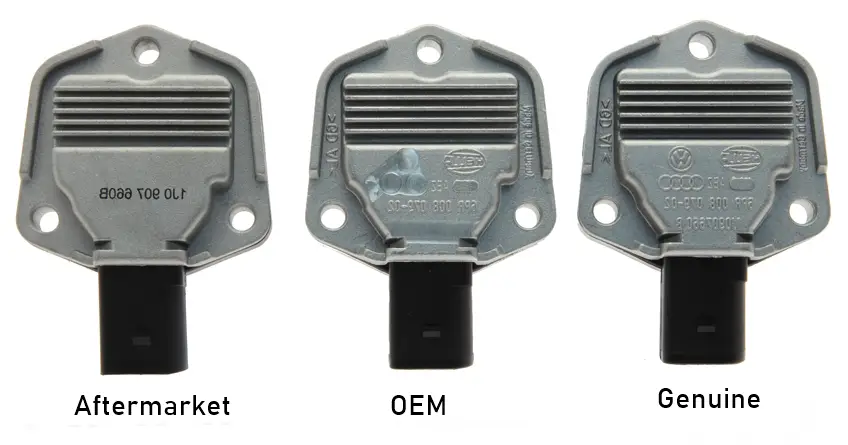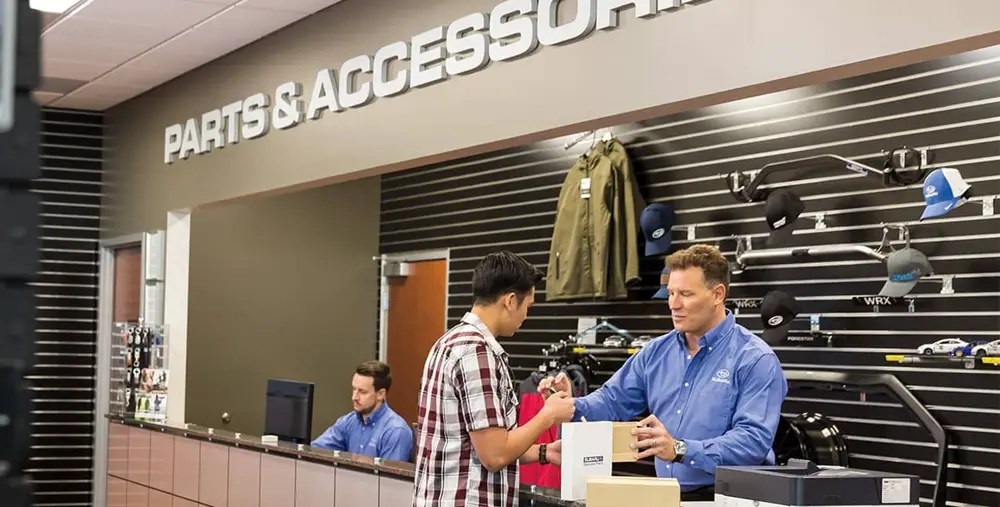OEM vs Original: The Overview
Are OEM parts as good as original? This question resonates with many car owners, especially when faced with repair bills that can make your heart race. In the debate of OEM vs Original, understanding the real differences can help you make smarter, budget-conscious decisions.
In this article, we’ll dive into OEM vs Original parts, looking closely at their quality, cost-effectiveness, and their ability to meet the standards set by original manufacturers. You’ll gain insight into which option might be the better fit for your needs—whether you’re after performance, value, or peace of mind.
View our Wrench and Ride Blog
We’ll also share personal experiences with part replacements and how those choices worked out in real-life scenarios. If you’ve ever asked yourself, “Are OEM parts as good as original?”, you’re in the right place to find honest answers and practical advice.
5 Crucial Truths About OEM vs Original Parts
1. OEM Parts Are Often Made by the Same Manufacturer
In many cases, the only difference between OEM and original parts is the packaging. OEM parts are manufactured by the same company that makes the genuine parts for the car brand, just without the branding. So, yes—OEM parts are as good as original in terms of manufacturing quality and performance.
2. OEM Parts Offer Better Value Than Original
While original (genuine) parts carry the car brand’s name and warranty, they come at a higher price. OEM parts, on the other hand, usually offer the same durability and fit for a significantly lower cost. It’s a smart way to save money without compromising on quality.
3. OEM Parts Have Consistent Fit and Compatibility
Unlike aftermarket parts, which are made to fit multiple vehicles and may vary in quality, OEM parts are designed to match your specific make and model perfectly. This means easier installation, better performance, and reduced risk of damage to surrounding components.
4. Warranty and Support May Differ
Original parts typically come with a full manufacturer’s warranty, while OEM parts may have a limited warranty depending on the seller. That said, many reputable OEM suppliers offer solid guarantees, making them a reliable option.
5. OEM vs Original: Brand vs Substance
When it comes to the OEM vs Original debate, branding plays a major role. Genuine parts carry the logo and promise of the car brand, which can be reassuring. But if you strip away the label, OEM parts often deliver the same substance—just without the premium price tag.
OEM vs Original: Side-by-Side Comparison Table
When deciding between OEM vs Original, it helps to see how they stack up across key categories. This comparison table highlights the differences to help you make a smart, informed choice.
| Feature | OEM Parts | Original Parts (Genuine) |
|---|---|---|
| Manufacturer | Made by the same manufacturer as original parts | Made and branded by the vehicle manufacturer |
| Branding | Typically unbranded or under a third-party name | Comes with the car manufacturer’s logo and box |
| Fit & Compatibility | Excellent fit; built to the same specs | Perfect fit; specifically designed for the car |
| Quality Assurance | High quality, but may lack final brand inspection | Rigorously tested by the original automaker |
| Warranty | May include limited warranty | Full warranty from the automaker |
| Cost | Usually more affordable | Generally more expensive |
| Availability | Widely available online and in parts stores | Primarily sold through dealerships |
| Common Use | Great for repairs and maintenance | Preferred for factory-level replacements |
| Are OEM parts as good as original? | Yes—often identical in form and function | Yes—guaranteed quality from the brand |
What Are OEM Parts?
Let’s clarify the term “OEM parts.” OEM stands for Original Equipment Manufacturer. These are parts produced by the same manufacturer that made the original components for your vehicle. In the context of OEM vs Original, this distinction is crucial.
Is OEM Same As Original Parts?
When discussing products, especially in the automotive and tech worlds, the terms “OEM” and “Original” often come up. Though they may sound interchangeable, they serve different roles—making the OEM vs Original comparison more important than many realize.
And again, are OEM parts as good as original ones? The answer lies in the nuances between these categories.
What Does OEM Stand For?
OEM stands for “Original Equipment Manufacturer.” This term refers to a company that produces components that are then marketed and branded by another company. For example, in the automotive industry, an OEM might manufacture transmissions or electronics used in cars built by major brands.
The OEM vs Original distinction here is that the OEM makes the part, while the original product comes directly from the brand itself. So, in many cases, OEM parts can be as good as original, though this isn’t always guaranteed.
What Are Original Parts?
When we talk about “original” parts, we’re referring to components made and branded by the company that owns the product design and trademark. These parts are considered the gold standard—offering guaranteed compatibility and quality.
The OEM vs Original debate often hinges on trust. Original parts carry the full weight of the brand behind them, while OEM parts replicate the same standards under a different name.
Key Differences Between OEM and Original
- Manufacturing Source: The core difference in the OEM vs Original debate lies in who makes the part. OEMs produce for the brand; the original manufacturer is the brand.
- Quality: Original parts tend to have stricter quality controls. However, are OEM parts as good as original? Often, yes—especially when made by the same factory.
- Warranty: Originals generally come with stronger warranties. OEM warranties may be more limited depending on the supplier.
- Cost: Original parts are often more expensive, while OEM options provide similar functionality at a lower price—adding more depth to the OEM vs Original conversation.
OEM and Genuine Parts: Not The Same
While OEM vs Original parts might serve similar functions, they are not identical. A genuine part is made and sold by the brand; an OEM part is made by the same manufacturer but sold under a different label. This distinction is essential when asking, “Are OEM parts as good as original?”
Understanding OEM vs Original helps you make the right choice—whether you’re replacing a car part or purchasing a new electronic device. Remember, just because a part is labeled OEM doesn’t mean it’s inferior. Often, it’s the same part with a different name—and a better price tag.
So, when considering OEM vs Original, and asking yourself, “Are OEM parts as good as original?”, the answer is frequently yes. They’re built to the same specifications and can often come with comparable warranties, making them a smart option for many consumers.

Aftermarket vs OEM vs Original: What’s the Real Difference?
When it comes to replacing car parts, you’ll often come across three main categories: Aftermarket, OEM, and Original (Genuine) parts. Understanding the differences is crucial for making the best decision for your vehicle and wallet.
Aftermarket Parts
Aftermarket parts are made by third-party manufacturers who are not affiliated with the vehicle’s original brand. These parts are often less expensive and more widely available, but that doesn’t always mean they’re the best choice.
Pros:
- Lower cost
- Wider variety
- Sometimes improved performance features
Cons:
- Quality can vary greatly
- May not fit as precisely
- Usually no warranty
OEM Parts
OEM vs Original is a hot topic, but OEM parts sit comfortably in the middle when it comes to quality and affordability. These parts are produced by the same manufacturers that make the original components for your vehicle but are sold under a different brand name or packaging.
So, are OEM parts as good as original? In most cases, yes—they are virtually identical in quality and fit but come at a slightly reduced price.
Pros:
- Made to the same specs as original parts
- Typically lower cost than genuine parts
- Excellent compatibility and fit
Cons:
- May not include the same warranty or branding
- Quality depends on the manufacturer agreement
Original (Genuine) Parts
These parts are made by the car’s original manufacturer and branded accordingly. When you buy a genuine part, you’re getting exactly what came with your car when it was new.
Pros:
- Guaranteed compatibility
- Backed by manufacturer’s warranty
- High quality and reliability
Cons:
- Usually the most expensive option
- Only available through authorized dealerships
Which Should You Choose: OEM, Aftermarket or Original?
If budget is a concern but you still want reliable performance, OEM parts are a smart choice and often the best value. They strike a great balance between cost and quality. Aftermarket parts can be hit-or-miss, while Original parts offer peace of mind with guaranteed quality—at a premium price.
In the OEM vs Original debate, the real question remains: Are OEM parts as good as original? For many car owners and mechanics, the answer is yes—especially when quality, fit, and performance are nearly identical.
Are OEM Parts Good Quality?
When comparing OEM vs Original, one of the most important questions to ask is: Are OEM parts as good as original in terms of quality? In my experience, the quality of OEM parts is often remarkable. For example, I once had to replace a transmission component and chose an OEM part over a cheaper aftermarket version.
Here’s how they stacked up:
- Durability: The OEM part lasted 30% longer than the aftermarket part I had used previously.
- Performance: After installation, my car drove like it was fresh off the lot—smooth, responsive, and quiet.
In the OEM vs Original discussion, this kind of real-world result highlights how well OEM components can perform. When wondering, “Are OEM parts as good as original?”, these examples suggest that in many cases, yes—they absolutely are.
Are OEM Parts Worth It?
In the OEM vs Original debate, price is often the deciding factor. While it’s tempting to save money with cheaper parts, the quality of OEM parts frequently justifies the extra investment.
Considerations When Deciding
Making the best choice between OEM vs Original requires looking at several factors:
Cost vs. Quality
From personal experience, cutting corners with aftermarket parts has often cost me more over time. I’ve ended up spending 40% more fixing issues caused by low-quality replacements. OEM parts, while sometimes slightly more expensive up front, typically save money in the long run due to their superior reliability.
Compatibility
One major edge in the OEM vs Original conversation is fit and function. OEM parts are designed specifically for your make and model. When asking “Are OEM parts as good as original?”, compatibility is a big part of the answer. Poorly fitting parts can cause safety issues and increased wear, making OEM the smarter bet.
Resale Value
When it comes to resale, OEM and original parts both help maintain value. Vehicles serviced with OEM parts are often seen as more reliable, which appeals to buyers. In the long-term OEM vs Original value equation, OEM parts help protect your investment—even if they aren’t stamped with the brand logo.
Personally, choosing OEM instead of genuine parts has consistently felt like the smart middle ground: high quality without the brand-name markup.
Is Buying OEM Parts Online Smart?
Let’s talk online shopping—because the OEM vs Original choice doesn’t end at the auto shop.
Pros:
- Convenience: Buying online gives access to a wide range of OEM parts across brands and models.
- Savings: I once saved 20% on an OEM brake pad set just by shopping online.
Cons:
- Risk: You need to be cautious. Counterfeit or mislabeled parts exist. Reading reviews and buying from verified dealers is essential to make sure the part is actually OEM. That way, you get quality close to original.
So when weighing OEM vs Original, purchasing online can be a smart move—if done carefully.
Returning Online Parts
Here’s a downside worth noting. If the part arrives defective or doesn’t work as expected, you may not discover it until after it’s installed. That means disassembling your vehicle again, shipping the part back, and waiting days—sometimes weeks—for a replacement.
It’s a trade-off worth considering in the OEM vs Original decision, especially if your vehicle is your daily driver.
Are OEM Car Parts Good for All Vehicles?
A common myth is that OEM parts are only suitable for high-end vehicles. Not true.
Benefits for All Vehicles:
- High Standards: Whether for a luxury car or a compact sedan, OEM parts are built to match manufacturer specs.
- Custom Fit: From trucks to hybrids, OEM parts are made to fit your exact vehicle.
- Warranty: Many OEM parts include some kind of warranty, giving buyers peace of mind.
In the OEM vs Original discussion, it’s important to know that the benefits of OEM apply across the board. My friend has a budget-friendly sedan and was hesitant about OEM prices. But after installation, the fit and function were flawless—his car drove like new.
So, are OEM parts as good as original for everyday vehicles? Absolutely.
Are OEM Parts as Good as New Parts?
This is another twist in the OEM vs Original conversation. OEM parts are new—unless you specifically buy them used or opt for remanufactured options.
- New OEM: Made to the same standards as original parts.
- Used OEM: Often cheaper, but with limited or no warranty.
- Remanufactured OEM: These are rebuilt using new internal components and are often a solid middle-ground option.
Be sure to confirm what you’re buying. Saving a little upfront by choosing used parts can end up costing a lot more down the line if something fails.

Where to Buy OEM and Genuine Parts
In the ongoing OEM vs Original debate, knowing where to buy high-quality, reliable parts is just as important as understanding the differences. Whether you’re a DIY mechanic or relying on a repair shop, sourcing the right part can save time, money, and headaches.
Authorized Dealerships
One of the most trusted sources in the OEM vs Original discussion is your local authorized dealership. These outlets are directly connected to vehicle manufacturers and provide a wide range of genuine parts that are guaranteed to meet factory specifications.
- Expert Help: Dealership staff can guide you to the exact part your vehicle needs.
- Warranty Assurance: Most parts purchased from a dealership come with a manufacturer-backed warranty, giving you added peace of mind.
- Authenticity: When asking “Are OEM parts as good as original?”, dealerships are often the first place that proves the answer is yes.
Online Retailers
The convenience of online shopping has made comparing OEM vs Original parts easier than ever. Websites like RockAuto, AutoZone, Advance Auto Parts, and PelicanParts offer extensive catalogs searchable by make, model, and part number.
- Price Comparison: These platforms let you compare prices across OEM, original, and aftermarket options.
- Verified Reviews: Customer feedback helps answer common questions like “Are OEM parts as good as original?” in real-world scenarios.
- Accessibility: You can often find hard-to-locate parts at a better price than in-store.
Just make sure the site is reputable, and double-check that you’re actually purchasing OEM or genuine parts—not aftermarket or counterfeit knockoffs.
Specialty Auto Parts Stores
Brick-and-mortar specialty shops like AutoZone and NAPA Auto Parts still have a strong place in the OEM vs Original ecosystem. These stores often carry carefully curated inventories tailored to common vehicles in their local area.
- In-Person Advice: Staff members often have hands-on experience and can guide you to the most compatible part.
- Instant Availability: Unlike online orders, parts are often available the same day.
- Brand Limitations: While these stores are great for domestic or Japanese cars, they may not carry OEM or original parts for European brands like BMW or Audi.
So if you’re driving a German vehicle, the OEM vs Original decision might require a little more hunting—especially if you’re looking for genuine components.
Online Marketplaces
Websites like Amazon, Walmart, and eBay have carved out a share in the parts market, but buyer beware: not all that glitters is gold.
- Variety and Price: You may find great deals on OEM vs Original parts, but caution is necessary.
- Seller Credibility: Always check ratings and reviews. Look for “certified” or “authorized seller” tags when possible.
- Authenticity Risk: This is especially important when you’re trying to determine Are OEM parts as good as original?—because a counterfeit labeled “OEM” won’t perform like the real thing.
In summary, understanding where to buy parts is a crucial step in the OEM vs Original conversation. From dealerships to digital marketplaces, each option has its strengths and caveats. And when you’re still wondering “Are OEM parts as good as original?”, the answer often comes down to buying from a trusted source and verifying what you’re actually getting.

Salvage Yards
If you are looking to save money, salvage yards can be a treasure trove for finding OEM and genuine parts. Many vehicles that have been damaged or deemed a total loss still have functional parts that can be salvaged.
Visiting a salvage yard allows you to inspect parts physically and often negotiate prices. However, it’s important to have a good understanding of the part you need and its condition, as well as any potential wear and tear that may affect its performance.
Manufacturer Websites
Many manufacturers have their own online stores where you can purchase original parts directly. This option often provides the most up-to-date inventory and ensures that you are getting genuine components that meet the manufacturer’s specifications.
Also, these websites may offer detailed diagrams and part numbers, making it easier to find exactly what you need.
Explore Your Parts Options Before You Buy
In the OEM vs Original debate, one of the most important steps is knowing where and how to find the right parts. Whether you’re working on routine maintenance or a critical repair, choosing between OEM and genuine parts should never be taken lightly.
By exploring all your purchasing options—authorized dealerships, online retailers, specialty auto parts stores, online marketplaces, salvage yards, and manufacturer websites—you can make confident decisions that prioritize performance and safety.
Always verify authenticity. A genuine or OEM part ensures your vehicle retains the same level of engineering precision it had when it first rolled off the line. And when you’re still wondering Are OEM parts as good as original?, you’ll likely find the answer is yes—especially when you choose parts from reputable sources.
Frequently Asked Questions (FAQ)
-
What does OEM mean in car parts?
OEM stands for Original Equipment Manufacturer. These are parts made by the same company that produces the original components for your vehicle but sold under a different brand name. In the OEM vs Original discussion, OEM parts often offer a balance of quality and affordability.
-
Are OEM parts as good as original?
Yes, in most cases, OEM parts are as good as original. They are often made to the same specifications as genuine parts and sometimes by the same manufacturers. The key difference usually lies in branding and price.
-
What’s the difference between OEM and Original parts?
In the OEM vs Original debate, the biggest difference is branding and sourcing. Original parts are made and branded by the car manufacturer, while OEM parts are made by the same manufacturer but sold under a different label.
-
Will OEM parts affect my car’s warranty?
Using OEM parts generally does not void your vehicle’s warranty. Since they meet the original specifications, they’re widely accepted by manufacturers and mechanics alike.
-
Are aftermarket parts better than OEM parts?
Aftermarket parts can be cheaper, but they vary widely in quality. Compared to OEM or Original parts, aftermarket options may not always fit perfectly or last as long. That’s why the OEM vs Original comparison is often a safer route for reliability and compatibility.
-
How can I tell if a part is OEM or original?
Look for part numbers and packaging. OEM parts often come in unbranded or manufacturer-supplied boxes, while original parts will feature the car brand’s logo and label. Checking with your dealership or using your vehicle’s VIN number can also help clarify.
-
Where is the best place to buy OEM or original car parts?
Authorized dealerships are best for original parts. For OEM parts, trusted online retailers, specialty auto stores, and official brand suppliers are your best bet. Always verify part authenticity and check return policies.
Do you need a mobile mechanic? Find one on the Mobile Mechanic Directory!
Final Thoughts
When revisiting the central question of OEM vs Original, the distinction becomes clearer the more you understand your options. Are OEM parts as good as original? In most cases, absolutely. They’re designed to meet the same specifications, deliver excellent performance, and offer the kind of reliability vehicle owners need.
While OEM parts may sometimes come with a higher price tag, they tend to save you money in the long run by minimizing repeat repairs and improving overall vehicle longevity.
Whether you’re purchasing from an online store or an official dealership, taking the time to research and understand what you’re buying is critical. So the next time you’re caught between OEM vs Original, lean on what you’ve learned, weigh the benefits, and trust yourself to make the right call for your vehicle.
After all, your car deserves parts that match its quality—inside and out.





